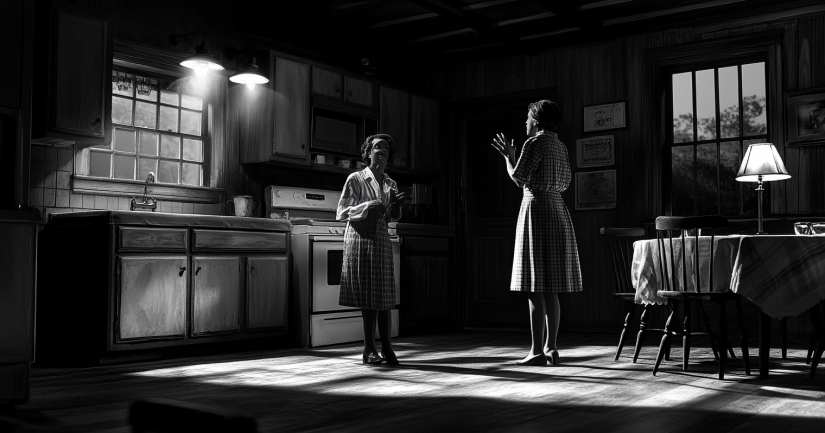
Dive into the dramatic elements of Miller’s groundbreaking work with our Death of a Salesman Drama Terms Quiz, Test Your Knowledge of Theatrical Devices in Arthur Miller’s Tragedy. The Death of a Salesman Drama Terms Quiz challenges your understanding of the literary and theatrical techniques that shape Arthur Miller’s classic tragedy. Death of a Salesman is not just a powerful narrative about Willy Loman’s downfall—it is also a masterclass in dramatic structure, symbolism, and theatrical innovation. Miller combines realism and expressionism, using non-linear storytelling, flashbacks, and symbolic motifs to create a unique theatrical experience. This quiz will test your knowledge of key drama terms, stage directions, and dramatic techniques that define the play’s impact.
Miller blends realism and expressionism, creating a play that feels emotionally raw while also bending reality.
- Realism focuses on authentic characters, everyday struggles, and natural dialogue. The play’s depiction of Willy’s failing career, family tensions, and financial struggles reflects the realist tradition in American theater.
- Expressionism, on the other hand, distorts reality to reflect psychological states. Willy’s hallucinations, flashbacks, and interactions with his dead brother Ben show how Miller externalizes Willy’s internal turmoil.
Understanding drama terms gives you a new perspective on Death of a Salesman—but do you know the characters just as well? Test yourself with the Death Of A Salesman Character Matching Quiz. Or, if you’re curious about which character best represents you, take the Which Death Of A Salesman Character Are You Quiz. And if you’re looking for the ultimate challenge, try the Death Of A Salesman Full Book Quiz.
Take On the Death Of A Salesman Drama Terms Quiz
Realism vs. Expressionism in Death of a Salesman
This fusion of realism and expressionism makes the play both emotionally grounded and symbolically rich.
Flashbacks and Non-Linear Storytelling
Miller breaks from traditional linear storytelling by shifting between past and present. These fluid time shifts allow the audience to see:
- Willy’s idealized memories of Biff’s football success.
- The contrast between past optimism and present despair.
- Willy’s guilt over his affair and its devastating impact on Biff.
Flashbacks serve as Willy’s psychological escape, but they also reveal his inability to accept reality.
Stage Directions and Theatrical Techniques
Miller’s detailed stage directions shape the play’s tone and meaning. Some key theatrical techniques include:
- Lighting Changes: Soft lighting distinguishes past memories from present reality, enhancing Willy’s mental fragmentation.
- The Flute Music Motif: Represents Willy’s father, a flute-maker who abandoned his family, reinforcing Willy’s fear of leaving no legacy.
- The Set Design: The play’s open, transparent set allows for seamless shifts between memory and reality, reinforcing its expressionistic structure.
Symbols and Motifs as Dramatic Devices
Miller uses powerful symbolism to deepen the play’s themes:
- The Rubber Hose: A symbol of Willy’s suicidal intentions, highlighting his desperation and failure to provide.
- Stockings: Represent both Willy’s infidelity and financial failure, as Linda mends old stockings while Willy gives new ones to The Woman.
- Seeds: Willy’s attempt to plant seeds in his barren yard symbolizes his last effort to leave something meaningful behind.
Tragic Hero and Modern Tragedy
Unlike classical tragedies featuring noble kings, Miller’s play presents a common man’s downfall.
- Willy Loman as a Tragic Hero: He possesses a fatal flaw—his unwavering belief in the American Dream.
- Hamartia (Tragic Flaw): Willy’s self-delusion and refusal to accept change lead to his demise.
- Catharsis: The audience experiences pity and fear, watching Willy’s inevitable downfall unfold.
By redefining tragedy for the modern era, Miller shows how ordinary people suffer under societal pressures and personal illusions.
How Well Do You Know the Dramatic Terms in Death of a Salesman?
Arthur Miller’s play is rich in dramatic techniques, from expressionistic stagecraft to symbolic storytelling. Whether you are analyzing its use of flashbacks, its stage directions, or Willy Loman’s tragic arc, this quiz will test your knowledge of the key dramatic devices that define Death of a Salesman.
Take the Death of a Salesman Drama Terms Quiz and see how well you understand Miller’s theatrical genius!
Death Of A Salesman Quizzes: Explore the American Dream’s highs and lows …
Death Of A Salesman Drama Terms – FAQ
The primary theme of Death of a Salesman is the pursuit of the American Dream and its impact on individuals and families. The play explores how the relentless chase for success and material wealth can lead to personal and familial disintegration. It also examines the illusions that people cling to in the face of inevitable failure.
The protagonist of Death of a Salesman is Willy Loman, a struggling salesman who grapples with his inability to achieve his dreams. Willy’s character embodies the tragic hero, caught in a web of self-deception and societal expectations, leading to his downfall.
Arthur Miller employs flashbacks in Death of a Salesman to illustrate Willy Loman’s memories and regrets. These non-linear sequences provide insight into Willy’s past decisions and their repercussions, highlighting the contrast between his youthful optimism and present despair. Flashbacks serve as a narrative tool to deepen the audience’s comprehension of his character.
Death of a Salesman is considered a tragedy because it portrays the downfall of an ordinary man, Willy Loman, due to his own flaws and societal pressures. The play evokes pity and fear as it depicts Willy’s relentless struggle and ultimate demise, fulfilling the traditional elements of a tragic narrative while challenging the notion of the tragic hero.
